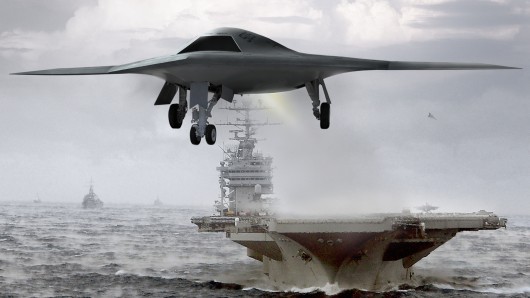No matter how I look at this, it still seems like science fiction – a combat aircraft without a pilot that is capable of flying itself, making its own decisions, recognizing and neutralizing threats, and taking off and landing on an aircraft carrier.
Last Friday (Feb 4), the Northrop Grumman-built U.S. Navy X-47B Unmanned Combat Air System Demonstration (UCAS-D) aircraft successfully completed its historic first flight at Edwards Air Force Base in California. The era of the unmanned combat plane is fast approaching.
Conducted by a U.S. Navy/Northrop Grumman test team, the flight took off at 2:09 p.m. PST and lasted 29 minutes. This event marks a critical step in the program, moving the team forward to meet the demonstration objectives of a tailless fighter-sized unmanned aircraft to safely take off from and land on the deck of a U.S. Navy aircraft carrier.
“First flight represents the compilation of numerous tests to validate the airworthiness of the aircraft, and the robustness and reliability of the software that allows it to operate as an autonomous system and eventually have the ability to take-off and land aboard an aircraft carrier,” said Capt. Jaime Engdahl, the Navy’s UCAS-D program manager.
“Designing a tailless, fighter-sized unmanned aircraft from a clean sheet is no small feat,” said Janis Pamiljans, vice president and UCAS-D program manager for Northrop Grumman’s Aerospace Systems sector. “Commitment, collaboration and uncompromising technical excellence among the Navy, Northrop Grumman and the UCAS-D team industry partners made today’s flight a reality. We are indeed honored to have given wings to the Navy’s vision for exploring unmanned carrier aviation.”
Taking off under hazy skies, the X-47B climbed to an altitude of 5,000 feet, flew several racetrack-type patterns, and landed safely at 2:38 p.m. PST. The flight provided test data to verify and validate system software for guidance and navigation, and the aerodynamic control of the tailless design.









